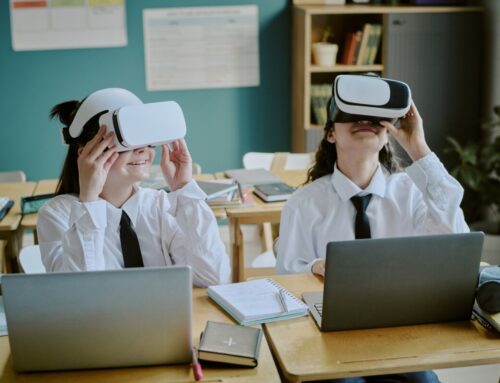
As educational institutions increasingly adopt AI technologies, it’s crucial to consider the hidden costs associated with these innovations. While AI can enhance learning experiences, the financial implications can be significant. Understanding the cons of AI in education helps stakeholders make informed decisions about integrating these tools into their systems.
Initial Investment and Maintenance
Implementing generative AI in education often requires substantial initial investments. Schools must purchase software, hardware, and training for staff. Additionally, ongoing maintenance costs can strain budgets, especially for underfunded institutions.
Dependence on Free AI Programs
While many free AI programs are available, they may lack the robustness of paid solutions. Relying on these tools can lead to inconsistent educational outcomes, as they often come with limitations that can hinder effective learning.
Long-Term Financial Burden
Investing in AI can create a long-term financial burden. Schools may face costs related to updates, cybersecurity, and data management. This ongoing expenditure can divert funds from other critical areas, such as teacher salaries and classroom resources.
In conclusion, while AI offers promising advancements in education, it’s essential to weigh these benefits against the potential financial downsides.
Start your journey to a brighter future—Enroll now!
Are We Sacrificing Human Interaction? The Social Downsides of AI
As we embrace the integration of AI in education, it’s crucial to consider the potential downsides. While AI offers numerous benefits, such as personalized learning experiences and access to free AI programs, we must also reflect on the social implications. Are we sacrificing human interaction in the process?
Reduced Face-to-Face Communication
One of the significant cons of AI in education is the decline in face-to-face interactions. Students may become overly reliant on generative AI in education tools, leading to less engagement with peers and teachers. This shift can hinder the development of essential social skills.
Emotional Disconnect
AI lacks the emotional intelligence that human educators provide. Students may miss out on the empathy and understanding that comes from human interaction, which is vital for their emotional and social development. This disconnect can lead to feelings of isolation and disengagement from the learning process.
Data Privacy Concerns: Who’s Watching Your Learning?
As we explore the downsides of AI in education, one critical aspect stands out: data privacy. With the rise of generative AI in education, students’ learning data is often collected and analyzed. This raises questions about who has access to this information and how it is used.
The Risks of Data Collection
- Surveillance: Many free AI programs track user behavior, potentially leading to a surveillance-like environment in classrooms.
- Data Breaches: Storing sensitive information increases the risk of data breaches, putting students’ personal information at risk.
- Lack of Transparency: Often, students and parents are unaware of how their data is being used or shared, leading to mistrust.
Balancing Innovation and Privacy
While AI can enhance learning experiences, it’s essential to balance innovation with privacy. Educators and institutions must ensure that the use of AI tools does not compromise students’ rights. This means implementing strict data protection policies and being transparent about data usage.
Can AI Truly Understand Diverse Learning Needs?
As education increasingly integrates technology, understanding the downsides of AI in education becomes crucial. While AI offers innovative solutions, it also raises concerns about its ability to cater to diverse learning needs. Can AI truly understand the unique challenges faced by individual students?
Limitations of AI Understanding
AI systems, including free AI programs, often rely on data patterns rather than personal insights. This can lead to a one-size-fits-all approach, neglecting the nuances of different learning styles. For instance, generative AI in education may struggle to adapt to students with specific learning disabilities or cultural backgrounds.
Potential Bias in AI Algorithms
Moreover, the algorithms behind AI can be biased, reflecting the limitations of their training data. This can result in unequal educational opportunities, particularly for marginalized groups. As we embrace technology, we must remain vigilant about these cons of AI in education, ensuring that all students receive the support they need.
The Risk of Over-Reliance: What Happens When Technology Fails?
As education increasingly integrates technology, understanding the downsides of AI in education becomes crucial. While AI offers innovative solutions, it also poses significant risks, particularly when reliance on these systems overshadows traditional learning methods. One major concern is the potential for technology failure, which can disrupt the learning process and hinder student progress.
Dependence on Technology
When educators and students depend heavily on free AI programs, they may overlook fundamental skills. If these tools fail or provide inaccurate information, learners could struggle to adapt. This reliance can lead to gaps in knowledge, making it essential to balance AI use with traditional teaching methods.
Loss of Critical Thinking Skills
Generative AI in education can streamline tasks, but it may also diminish critical thinking. Students might become accustomed to AI-generated answers, reducing their ability to analyze and solve problems independently. Encouraging active engagement with learning materials is vital to prevent this decline in cognitive skills.
Start your journey to a brighter future—Enroll now!
Equity in Education: Is AI Widening the Gap?
As we delve into the role of AI in education, it’s crucial to consider the potential downsides. While AI can enhance learning experiences, it also raises significant concerns about equity. The question arises: Is AI widening the gap between students with different resources and backgrounds?
Access to Technology
One of the primary cons of AI in education is the disparity in access to technology. Not all students have equal access to devices or reliable internet, which can hinder their ability to utilize free AI programs effectively. This digital divide can exacerbate existing inequalities in educational outcomes.
Dependence on Generative AI
Another concern is the reliance on generative AI in education. While these tools can provide personalized learning experiences, they may also lead to a one-size-fits-all approach. Students who struggle with technology might find themselves at a disadvantage, unable to engage with the material as effectively as their peers.
Read Also: Where Can You Find Free AI Programs? A Complete Guide
How Can ‘Degreesonline.education’ Help Mitigate the Cons of AI in Education?
As we explore the downsides of AI in education, it’s crucial to understand the potential pitfalls that come with integrating technology into learning environments. While AI can enhance educational experiences, it also raises concerns about equity, data privacy, and the potential for reduced human interaction. Addressing these issues is essential for creating a balanced approach to education.
Promoting Equity in Access
One of the significant cons of AI in education is the disparity in access to technology. Free AI programs can help bridge this gap by providing resources to underfunded schools, ensuring that all students have the tools they need to succeed. By offering these programs, ‘Degreesonline.education‘ can promote inclusivity and equal opportunities for all learners.
Ensuring Data Privacy
Another concern is data privacy. With the rise of generative AI in education, sensitive student information may be at risk. ‘Degreesonline.education‘ can help by advocating for strict data protection policies and providing resources that educate educators and students about safe AI practices, ensuring that privacy is prioritized in all AI applications.
What’s Next? The Future of AI and Its Challenges in the Classroom
As we explore the integration of AI in education, it’s crucial to acknowledge the potential downsides. While AI offers innovative solutions, it also presents challenges that educators and students must navigate. Understanding these cons of AI in education is essential for creating a balanced approach to learning.
Dependence on Technology
One significant concern is the growing dependence on technology. Students may rely too heavily on free AI programs for answers, which can hinder critical thinking and problem-solving skills. This reliance can lead to a lack of engagement in traditional learning methods, making it essential to find a balance between AI tools and conventional education.
Data Privacy Issues
Another challenge involves data privacy. Generative AI in education often requires access to personal information, raising concerns about how this data is stored and used. Schools must ensure that they protect student information while still leveraging AI’s benefits. Transparency in data handling is vital to maintain trust among students and parents.
Equity in Access
Lastly, there’s the issue of equity. Not all students have equal access to technology, which can widen the educational gap. Schools must address these disparities to ensure that the benefits of AI are available to everyone, not just those with the latest devices or internet access.
Start your journey to a brighter future—Enroll now!
FAQs
-
What are the main disadvantages of using AI in education?
Some key concerns include reduced human interaction, data privacy risks, biased algorithms, high implementation costs, and over-reliance on technology. -
Can AI replace teachers in the future?
While AI can automate tasks and provide personalized learning, it lacks emotional intelligence, creativity, and real-world problem-solving skills that human teachers offer. -
Does AI in education create a digital divide?
Yes, students from lower-income backgrounds may lack access to AI-powered tools, widening the educational gap between privileged and underprivileged students. -
Is AI biased in education?
AI algorithms can reflect biases in their training data, leading to unfair grading, misrepresentation, or inaccurate recommendations for students from diverse backgrounds. -
Can AI negatively impact student learning?
Over-reliance on AI can reduce critical thinking, problem-solving skills, and creativity, as students may depend too much on technology rather than traditional learning methods.




